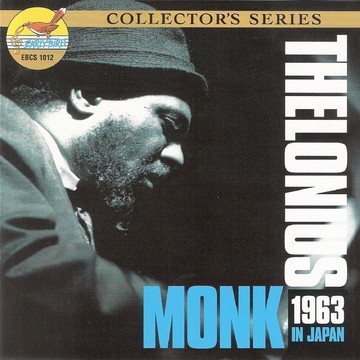
Monk, Thelonious
Thelonious Sphere Monk , (October 10, 1917-February 17, 1982) was an American jazz pianist and composer. He had a unique improvisational style and made numerous contributions to the standard jazz repertoire, including “‘Round Midnight”, “Blue Monk”, “Straight, No Chaser”, “Ruby, My Dear”, “In Walked Bud”, and “Well, You Needn’t”. Monk is the second-most-recorded jazz composer after Duke Ellington.
Monk’s compositions and improvisations feature dissonances and angular melodic twists and are consistent with his unorthodox approach to the piano, which combined a highly percussive attack with abrupt, dramatic use of switched key releases, silences, and hesitations. His style was not universally appreciated; the poet and jazz critic Philip Larkin dismissed him as “the elephant on the keyboard”.
Monk was renowned for a distinct look which included suits, hats, and sunglasses. He was also noted for an idiosyncratic habit during performances: while other musicians continued playing, Monk would stop, stand up, and dance for a few moments before returning to the piano.
Monk is one of five jazz musicians to have been featured on the cover of Time magazine (the others being Louis Armstrong, Dave Brubeck, Duke Ellington and Wynton Marsalis).
Monk had disappeared from the scene by the mid-1970s for health reasons and made only a small number of appearances during the final decade of his life. His last studio recordings as a leader were made in November 1971 for the English Black Lion label, near the end of a worldwide tour with the Giants of Jazz, a group which included Gillespie, Kai Winding, Sonny Stitt, Al McKibbon, and Art Blakey. Bassist McKibbon, who had known Monk for over twenty years and played on his final tour in 1971, later said: “On that tour, Monk said about two words. I mean literally maybe two words. He didn’t say ‘Good morning,’ ‘Goodnight,’ ‘What time?’ Nothing. Why, I don’t know. He sent word back after the tour was over that the reason he couldn’t communicate or play was that Art Blakey and I were so ugly.” A different side of Monk is revealed in Lewis Porter‘s biography, John Coltrane: His Life and Music; Coltrane states: “Monk is exactly the opposite of Miles [Davis]: he talks about music all the time, and he wants so much for you to understand that if, by chance, you ask him something, he’ll spend hours if necessary to explain it to you.” Blakey reports that Monk was excellent at both chess and checkers.
The documentary film Thelonious Monk: Straight, No Chaser (1988) attributes Monk’s quirky behavior to mental illness. In the film, Monk’s son says that his father sometimes did not recognize him, and he reports that Monk was hospitalized on several occasions owing to an unspecified mental illness that worsened in the late 1960s. No reports or diagnoses were ever publicized, but Monk would often become excited for two or three days, then pace for days after that, after which he would withdraw and stop speaking. Doctors recommended electroconvulsive therapy as a treatment option for Monk’s illness, but his family would not allow it; antipsychotics and lithium were prescribed instead. Other theories abound: Leslie Gourse, author of the book Straight, No Chaser: The Life and Genius of Thelonious Monk (1997), reported that at least one of Monk’s psychiatrists failed to find evidence of manic depression (bipolar disorder) or schizophrenia. Another doctor maintains that Monk was misdiagnosed and prescribed drugs during his hospital stay that may have caused brain damage.
As his health declined, Monk’s last six years were spent as a guest in the Weehawken, New Jersey, home of his long-standing patron and friend, Pannonica de Koenigswarter, who nursed Monk during his final illness. She proved to be a steadfast presence, as did his own wife Nellie, especially as his life descended into further isolation. Monk did not play the piano during this time, even though one was present in his room, and he spoke to few visitors. He died of a stroke on February 17, 1982, and was buried in Ferncliff Cemetery in Hartsdale, New York.
